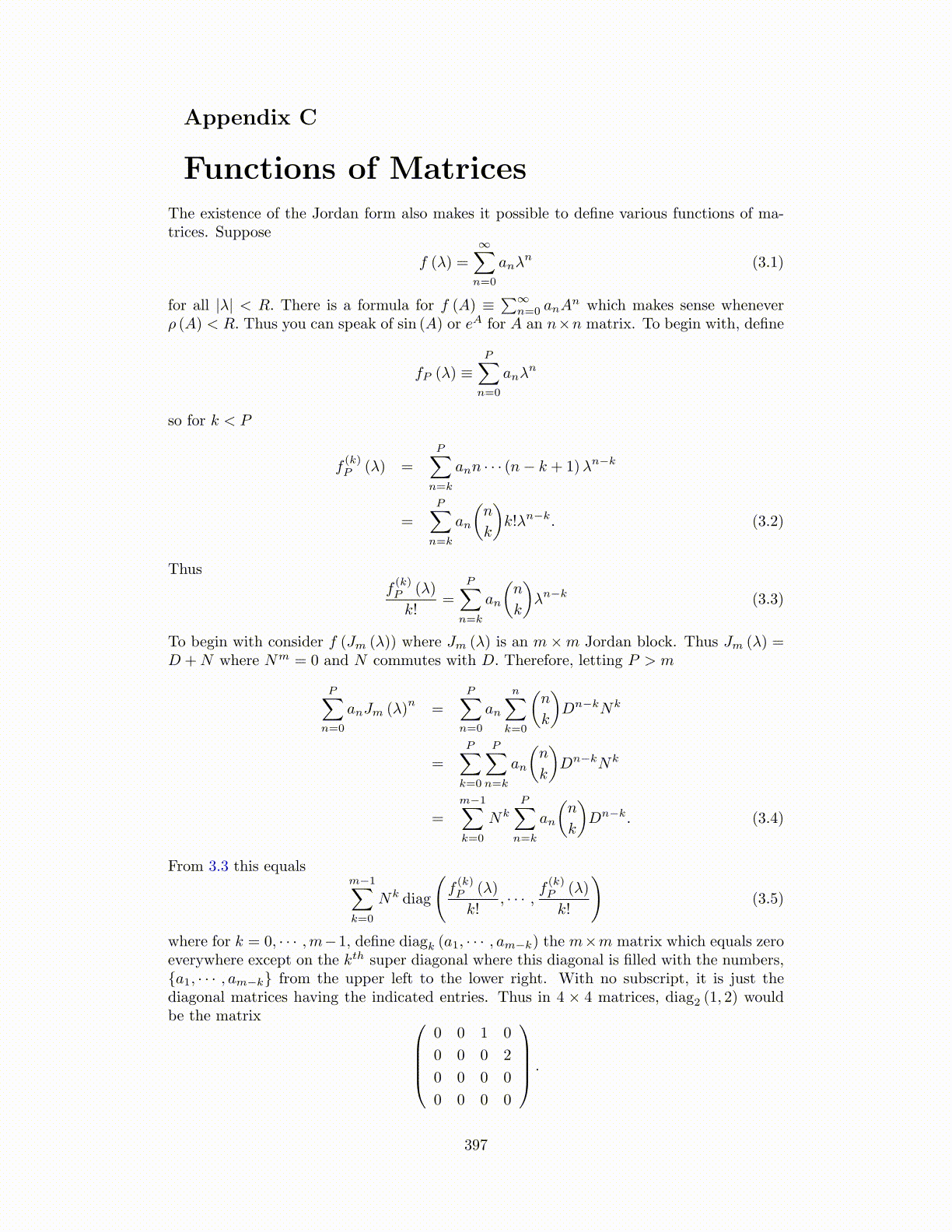
Appendix C
Functions of MatricesThe existence of the Jordan form also makes it possible to define various functions of ma-trices. Suppose
f (λ) =
∞∑n=0
anλn (3.1)
for all |λ| < R. There is a formula for f (A) ≡∑∞
n=0 anAn which makes sense whenever
ρ (A) < R. Thus you can speak of sin (A) or eA for A an n×n matrix. To begin with, define
fP (λ) ≡P∑
n=0
anλn
so for k < P
f(k)P (λ) =
P∑n=k
ann · · · (n− k + 1)λn−k
=
P∑n=k
an
(n
k
)k!λn−k. (3.2)
Thusf(k)P (λ)
k!=
P∑n=k
an
(n
k
)λn−k (3.3)
To begin with consider f (Jm (λ)) where Jm (λ) is an m×m Jordan block. Thus Jm (λ) =D +N where Nm = 0 and N commutes with D. Therefore, letting P > m
P∑n=0
anJm (λ)n
=
P∑n=0
an
n∑k=0
(n
k
)Dn−kNk
=
P∑k=0
P∑n=k
an
(n
k
)Dn−kNk
=
m−1∑k=0
NkP∑
n=k
an
(n
k
)Dn−k. (3.4)
From 3.3 this equalsm−1∑k=0
Nk diag
(f(k)P (λ)
k!, · · · ,
f(k)P (λ)
k!
)(3.5)
where for k = 0, · · · ,m−1, define diagk (a1, · · · , am−k) the m×m matrix which equals zeroeverywhere except on the kth super diagonal where this diagonal is filled with the numbers,{a1, · · · , am−k} from the upper left to the lower right. With no subscript, it is just thediagonal matrices having the indicated entries. Thus in 4 × 4 matrices, diag2 (1, 2) wouldbe the matrix
0 0 1 0
0 0 0 2
0 0 0 0
0 0 0 0
.
397